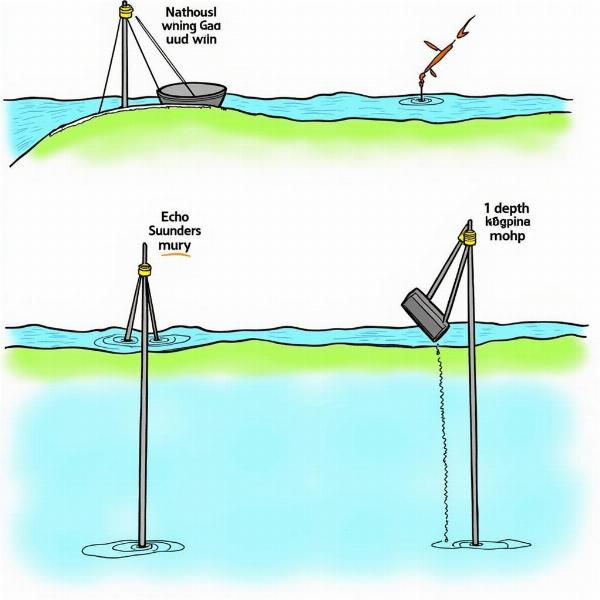Navigability meaning in Hindi revolves around the concept of “जलमार्गयोग्यता” (jalmaarg yogyata), referring to the suitability of a body of water for navigation. Understanding navigability is crucial for transport, trade, and even leisure activities. Whether you’re discussing the Ganges River or a small canal, knowing if it’s navigable opens up a world of possibilities. This article dives deep into the meaning of navigability in Hindi, exploring its nuances, related terms, and significance.
What Does Navigability Mean in Hindi?
Navigability, translated as “जलमार्गयोग्यता” (jalmaarg yogyata) in Hindi, essentially describes a waterway’s capacity to allow boats or ships to pass through safely and efficiently. This involves various factors, such as water depth, width, current strength, and the presence of obstacles like rocks or rapids. A navigable waterway allows for the transportation of goods and people, supporting trade, commerce, and connectivity.
Factors Affecting Navigability
Several factors contribute to a waterway’s navigability. Water depth is crucial, as insufficient depth can cause vessels to run aground. The width of the waterway determines the size of ships that can pass through. The strength and direction of currents also impact navigation, making it easier or harder to steer vessels. Obstacles like rocks, rapids, or submerged debris pose significant threats to navigation.
Water Depth and Width: Key Considerations
The depth and width of a waterway are fundamental to its navigability. Deeper and wider waterways can accommodate larger vessels, facilitating bulk transport. Shallow or narrow waterways may only be suitable for smaller boats or require specific navigational expertise.
 Measuring River Depth for Navigation
Measuring River Depth for Navigation
Currents and Obstacles: Navigational Challenges
Strong currents can make navigation challenging, requiring powerful engines and skilled helmsmen. Obstacles like rocks, rapids, or even floating debris pose safety hazards, potentially causing accidents. Careful charting and navigation are essential to mitigate these risks.
Navigability and Water Transport in India
India, with its extensive river network, has a long history of using waterways for transport. Rivers like the Ganges, Brahmaputra, and Godavari have been vital trade routes for centuries. rivers meaning in hindi Understanding the navigability of these rivers is crucial for developing efficient inland water transport systems.
Navigable Waterways and Economic Development
Navigable waterways offer a cost-effective and environmentally friendly mode of transportation. They contribute significantly to economic development by facilitating trade, connecting remote areas, and boosting tourism. water transport meaning in hindi Investing in infrastructure to improve navigability can have far-reaching economic benefits.
Conclusion
Navigability, or “जलमार्गयोग्यता” (jalmaarg yogyata), is a crucial concept for understanding water transport and its implications. Factors like water depth, width, currents, and obstacles all play a role in determining a waterway’s navigability. By improving the navigability of our waterways, we can unlock significant economic and social benefits.
FAQ
- What is the Hindi word for navigability? The Hindi word for navigability is “जलमार्गयोग्यता” (jalmaarg yogyata).
- Why is navigability important? Navigability is crucial for transportation, trade, and economic development.
- What factors affect navigability? Water depth, width, currents, and obstacles influence a waterway’s navigability.
- How does navigability impact India? India’s extensive river network relies on navigability for inland water transport.
- What is the meaning of navigable rivers? Navigable rivers are those suitable for the safe passage of boats and ships.
- How is navigability assessed? Navigability is assessed through surveys and measurements of water depth, width, currents, and obstacles.
- What are the benefits of improving navigability? Improved navigability can boost trade, connect remote areas, and promote economic growth.
Related Articles
Meaning-Hindi.in is your premier destination for professional Hindi translation services. We specialize in business and commercial document translation, certified and legal document translation, technical and user manual translation, website and localization services, educational and academic document translation, express translation, and specialized industry translation. Whether you need to translate legal contracts or marketing materials, our expert team delivers accurate and culturally sensitive translations. Contact us today for a free quote at [email protected] or call us at +91 11-4502-7584. Meaning-Hindi.in is committed to bridging language barriers and connecting you with your target audience.